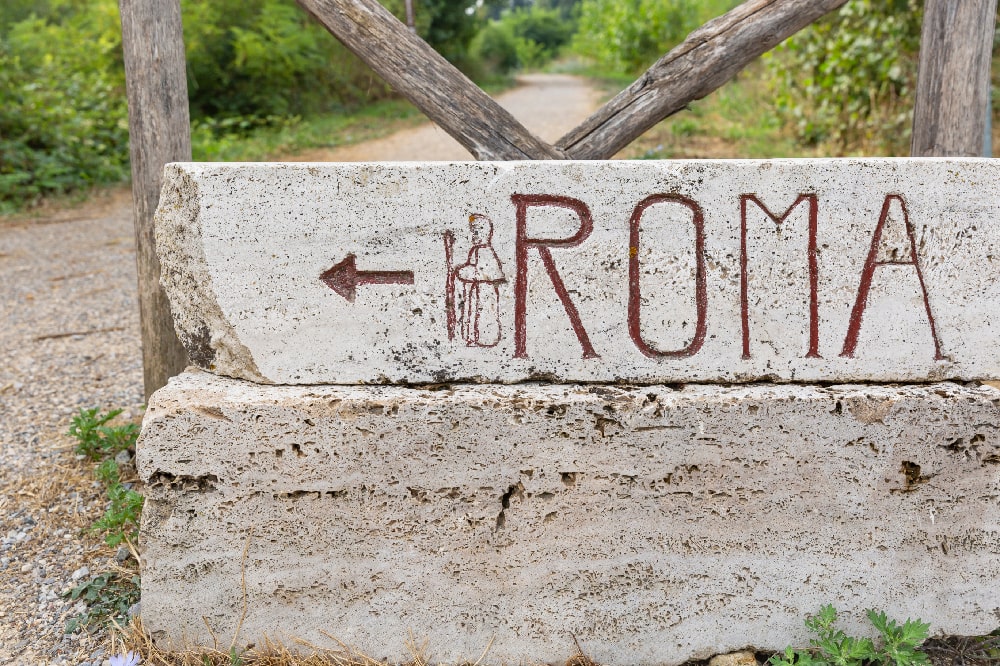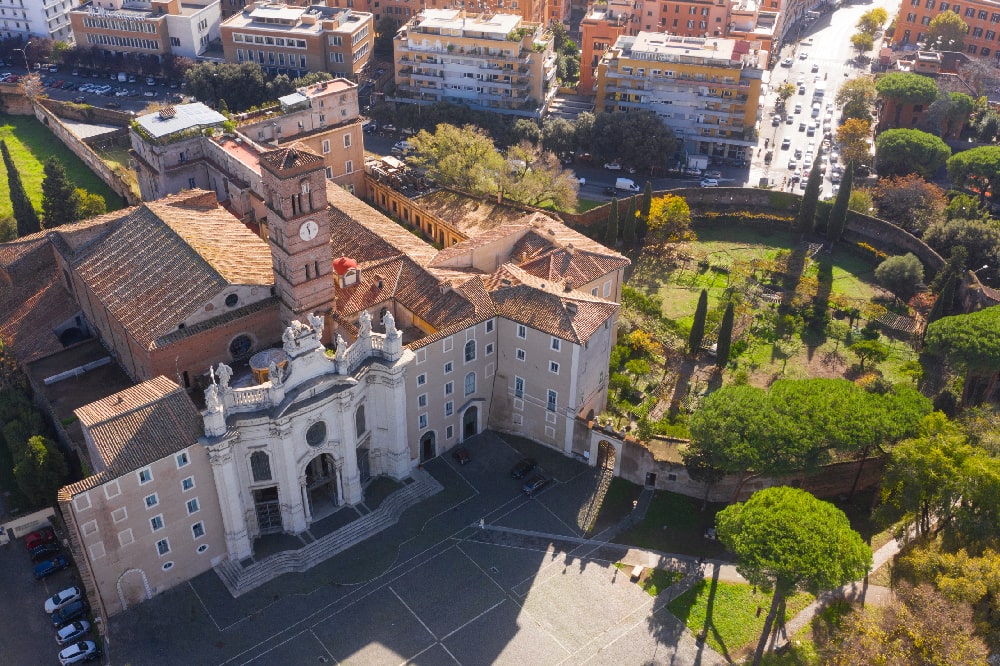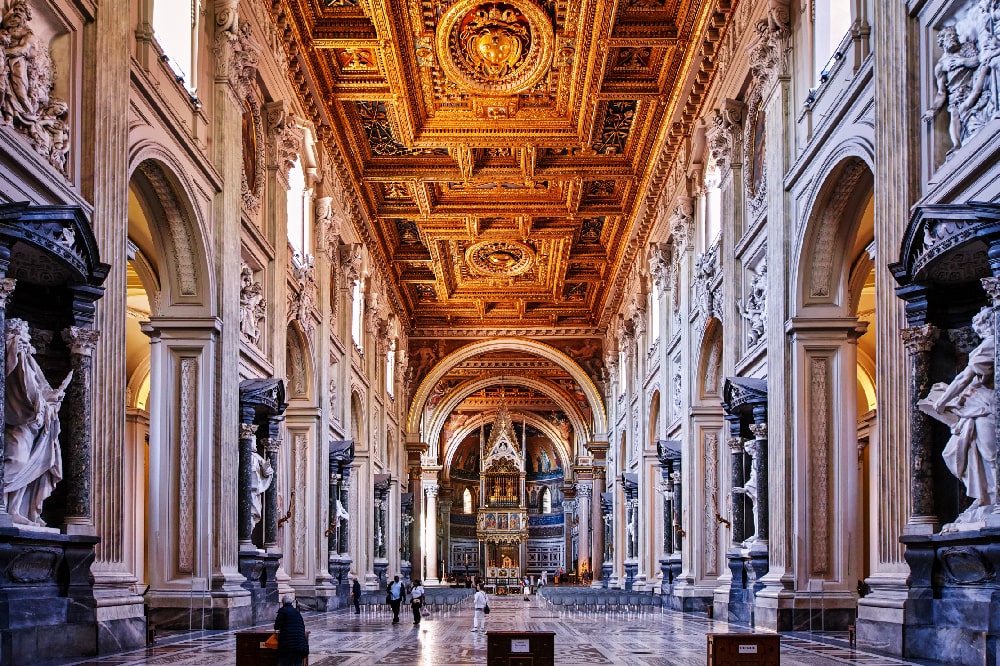The cross is an ancient symbol, with many variations throughout time. For Christians, it is of the utmost importance. Lets’ discover the different types of crosses, their history and their symbolical meaning.
Contents
- 1 Latin Cross
- 2 Greek cross
- 3 Tau cross, also known as Saint Anthony the Abbot cross or Crux Commissa.
- 4 Tree of Life Cross
- 5 Eight pointed Cross
- 6 Cross of Saint Aemilian of Cogolla
- 7 The Coptic Cross
- 8 Cross with trilobed terminals
- 9 Russian Cross
- 10 Marian Cross
- 11 Papal Triple Cross
- 12 San Damiano Cross
- 13 Saint Andrew’s Cross
What is a cross? Most of the people we know would answer such question by saying that it is the Christian symbol par excellence since it recalls crucified Christ, who sacrificed himself for the salvation of humankind. This is of course true, but the symbolism of the cross is older than that.
What shape is a cross? The geometric shape of a cross is rather simple: two lines crossing themselves at a straight angle, splitting themselves in half in some cases, or the longer line is divided so that it has a longer and a shorter beam. Such a shape is so easily replicable that we understand why it is one of the most ancient symbols of humankind.
Christianism was not the first religion to use crosses as objects of devotion. Since the Stone Age, and until the pre-Christian era, there were many pictures shaped as crosses. The so-called Celtic cross was the symbol of the god Odin for the Northmen. It represented a cross enclosed in a circle. Even in ancient Egypt, a symbol recalled a cross, the ankh, the symbol of life. Islam on the contrary, never recognized the cross as a religious symbol, because it denies Jesus’ death on the cross and states that he was replaced by a lookalike.
The word ‘Cross’ comes from the Latin word Crux. For the Romans, it was an instrument used to inflict tortures, crucifixion indeed. However, in the sphere of symbols, we remind that in Roman numbers, number 10 is an X, an element that resembles a cross very much.

10 crucifixes for your home: check them out on Holyart
Keeping a crucifix in your home. A choice for many, a duty and a need for a Christian. Symbol of Jesus’ sacrifice…
Getting to Christianism, as we revealed earlier, the cross is the main symbol of the religion. In fact, it recalls Jesus’ death, crucified by order of Pontius Pilate, Roman Procurator of Judea, who sentenced him to death. Paradoxically, even though it came from such a brutal and terrible act, the cross is reborn, and has been passed on with a positive value, since Jesus’ passion and death coincide with the fulfillment of his mission of salvation for all men. A symbol of absolute love then, and of extreme sacrifice.
Yet, the cross and the crucifix took a bit more time to spread and be recognized. They began being used in an important way only from the IV century. The habit of placing a cross over the altar in churches actually began during the Medieval age.
Let’s take a look at the various types of crosses and crucifixes that became popular during the centuries, as symbolic-decorative elements and with particular symbolic meanings.
Latin Cross
It is the most typical, the one that represents Jesus’ crucifixion for Christians. It has two perpendicular beams, the horizontal one being shorter than the vertical one.
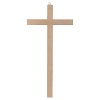
Greek cross
It is composed of four arms of the same length, crossing each other at a straight angle. It is typical of the Byzantine art, alternating with the Latin cross as base diagrams for churches. Its four equal beams and the fact that it can be contained in a square, make it the idealized cross, which represents the Divine Nature of Christ.
Tau cross, also known as Saint Anthony the Abbot cross or Crux Commissa.
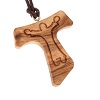
The Tau is the last letter of the ancient Jewish alphabet, which represented the fulfillment of the whole word revealed by God. Its shapes recalls a cross indeed, but with no upper beam. That’s why the Christians adopted it. Since it is the last letter of the Jewish alphabet, another reason is that it contained a prophecy about the End of Time, just like the Greek letter Omega.
It owes its popularity and diffusion mainly to Saint Francis, who chose it as his symbol of devotion and as a seal, strong in his spiritual belief that the salvation of every man lied in Christ’s cross.
Tree of Life Cross
The connection between the cross and the tree of life is also fascinating.
A legend says that the tree used to make Jesus’ cross was born from one of the three seeds (cedar, cypress and pine) placed into Adam’s mouth when he died. Another legend says that when Adam died, his son Set put a twig from the Tree of Life in his mouth, given to him by the Archangel Michael. A new tree would grow from that twig.
The tree of life cross beams resemble the roots of a tree, full of leaves, flowers and fruits. Besides those legends, its symbolism is clear. The cross is the new tree of life thanks to Jesus’ sacrifice, who stated his identity: ‘I am the life‘ (John 14,6; 6,53).
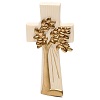
Eight pointed Cross
The eight pointed cross, also known as the Maltese Cross, or saint John’s cross, was the symbol of the maritime Republic of Amalfi at least since the XI century. It was also the symbol of the Knights Hospitaller of Jerusalem, upon whose clothes it stood out in white, recalling the Pureness of the Beatitudes.
The eight pointed cross has Byzantine origins. The eight points probably symbolize the Beatitudes listed by Saint Matthew:
- Blessed are the poor in spirit, for theirs is the kingdom of heaven
- Blessed are the meek, for they shall inherit the earth
- Blessed are they who mourn, for they shall be comforted
- Blessed are they who hunger and thirst for righteousness, for they shall be satisfied
- Blessed are the merciful, for they shall obtain mercy
- Blessed are the pure of heart, for they shall see God
- Blessed are the peacemakers, for they shall be called the children of God
- Blessed are they who are persecuted for the sake of righteousness, for theirs is the kingdom of heaven
As an alternative, they could represent the Christian virtues:
- Loyalty
- Mercy
- Frankness
- Courage
- Glory and honor
- Scorning death
- Solidarity towards poor and sick
- Respect for the Church
Or more, the eight principles that were the foundations of the mission of the Knights of Saint John:
- spirituality
- simplicity
- humility
- compassion
- justice
- mercy
- sincerity
Cross of Saint Aemilian of Cogolla
Also known as the Visigoth cross, it is a cross with anchor-shaped beams, that is, with the tips curved towards the outside like anchors. This cross is connected to the figure of Saint Aemilian, a hermit who lived in Spain during the VI century. That is why the cross is also known with the Spanish name of Cruz de San Millán.
The twelve tips of its beams represent the twelve apostles. The fact that the tips are facing towards the outside or the inside indicates the weakness of the Church, made of men, saints and sinners. The decor that leads towards the inside is made of nettle leaves, as a reminder that following the path of God can turn out to be very painful. The center of the cross of Saint Aemilian is made of a flower with eight petals, symbolizing the eight beatitudes. In the middle, a point symbolizes God. Four trilobed blossoms branch off, representing the Trinity.
The Coptic Cross
Also known as crux ansata or Egyptian Cross, it is shaped as an upside-down drop, placed in the middle of the horizontal beams. It looks like a key, and that is why it is also called Cross of Life, Nile cross or Ankh Cross, in memory of the ancient Egyptian symbol for eternal life.
The Coptic cross is nothing but an evolution of the ancient Egyptian ankh, which decorated Pharaohs tombs and was often represented in the hands of the gods. The orthodox Coptic Church made this symbol its own, and transformed it until it reached its current aspect.
Cross with trilobed terminals
It is typical of the Orthodox Russian Church and has two perpendicular crossbeams, plus a slanted one below the others. This last one recalls the stand for Christ’s feet when he was crucified. The crossbeams are closed by trilobed tips symbolizing the Trinity, like the shamrock this cross takes its origins from.
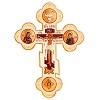
Russian Cross
Also known as Byzantine or Orthodox Cross, it has three crossbeams: the higher one is the titulus crucis, the sign showing the reason behind Jesus’ sentence; the lower one, diagonal, is the suppedaneum, the wooden support for Christ’s feet when he was crucified. It was born in the Byzantine era, it is the symbol of the Orthodox Russian Church and other Slavic churches.
Marian Cross
Pope John Paul II used it as his emblem, and is made of a Latin Cross and the letter M symbolizing the Virgin Mary kneeling in front of the cross on the Calvary.
Papal Triple Cross
It is made of a long lengthwise arm and three horizontal bars. The three bars represent the triple role of the Pope:
- bishop of Rome;
- patriarch of the West;
- successor of Saint Peter apostle.
The Lamb of God usually sustains it.
San Damiano Cross
This is the cross that Francis of Assisi adored, in front of which he received the request from the Lord to repair his home. Jesus is wounded in it, but also triumphant, determined and fierce in spite of his suffering. A halo is on his head and encloses another cross, symbol of his forthcoming glory. The majestic image of Jesus is surrounded by smaller figures, each one of them carrying a very specific symbolic meaning. We dedicated an article to this wonderful crucifix.
Saint Andrew’s Cross
Saint Andrew’s Cross (in Latin: crux decussata), unlike other crosses, has diagonal arms. That is, they are shaped like an ‘X’. It is said that Saint Andrew apostle experienced martyrdom on a cross shaped like this one.

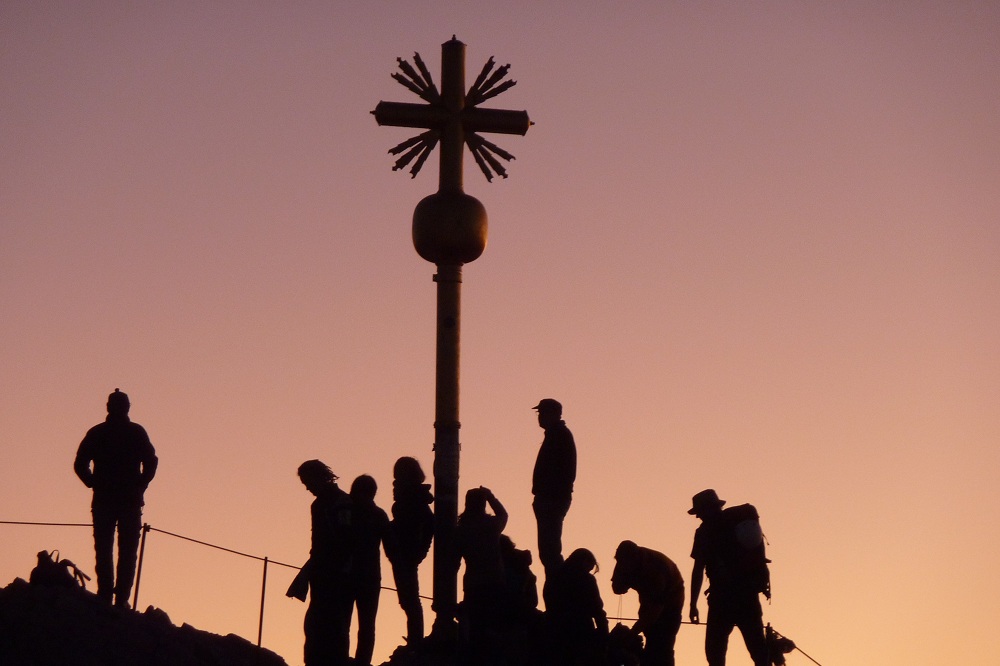
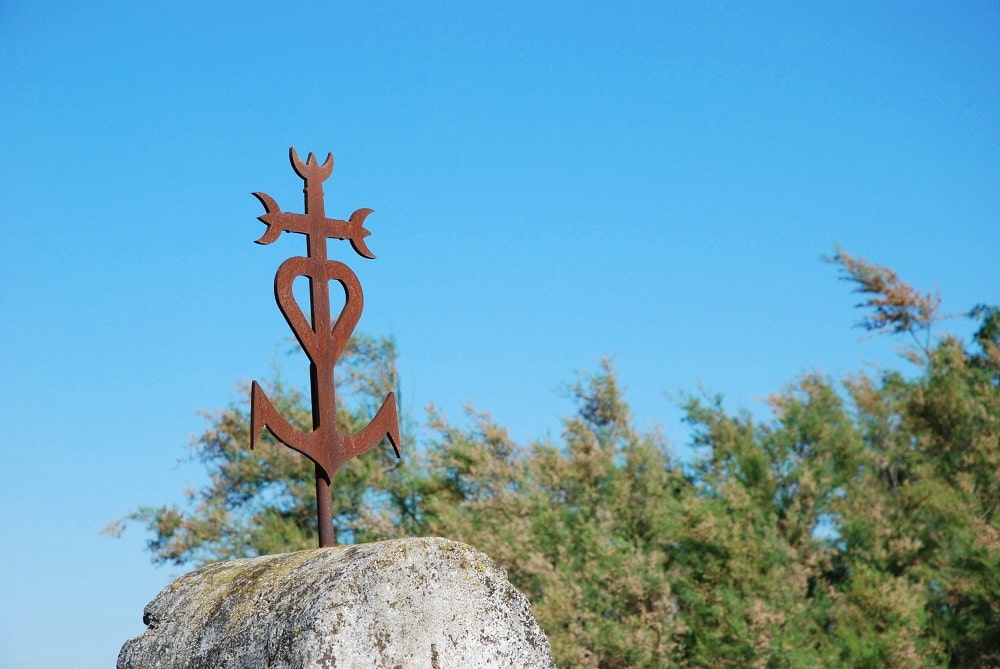
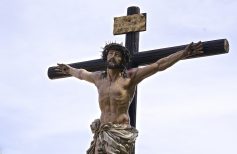
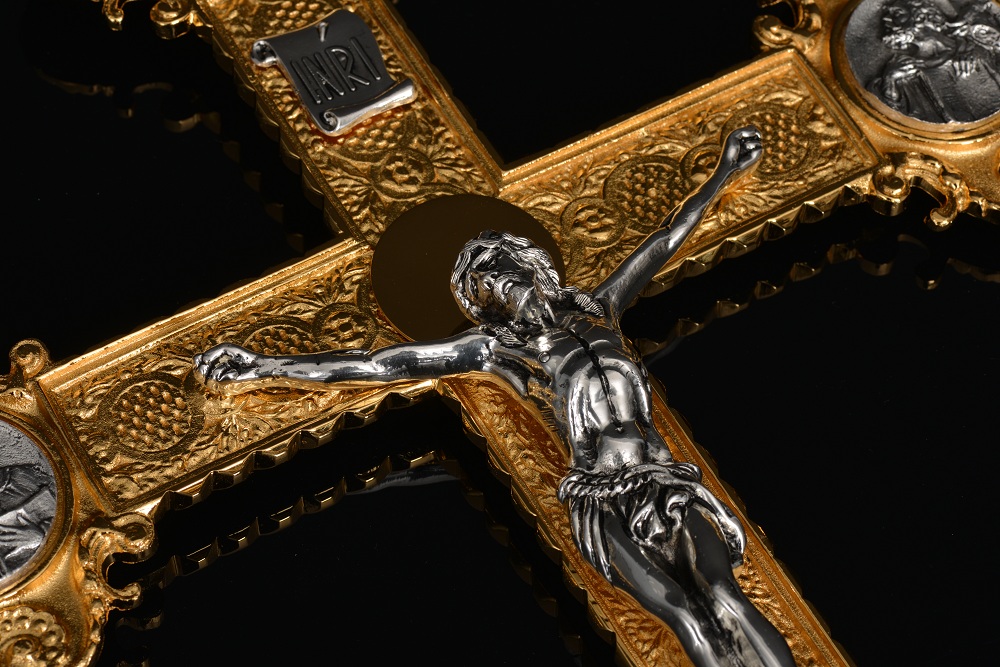
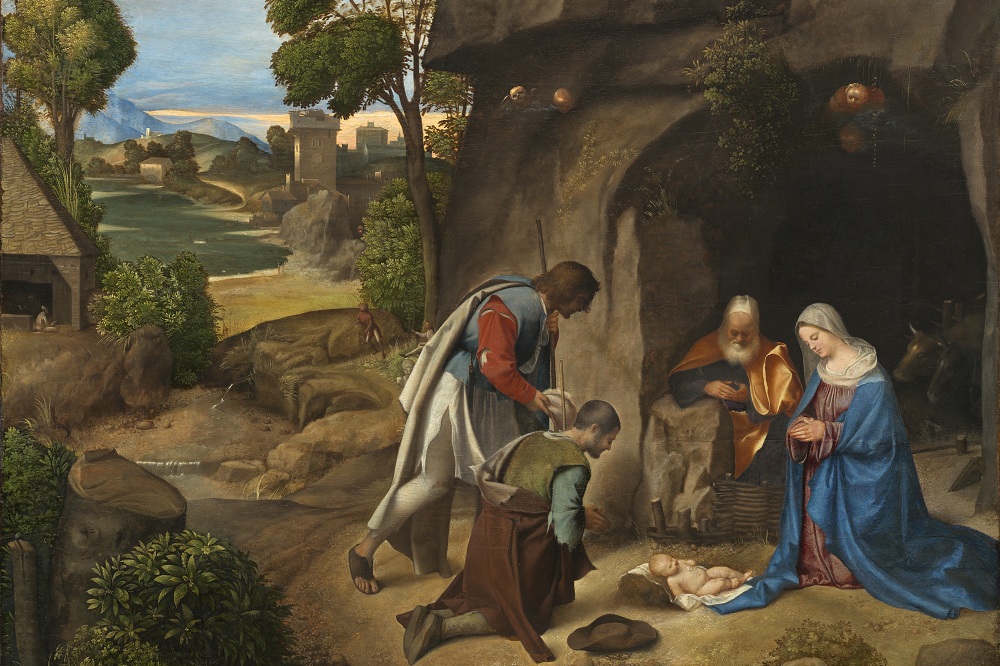
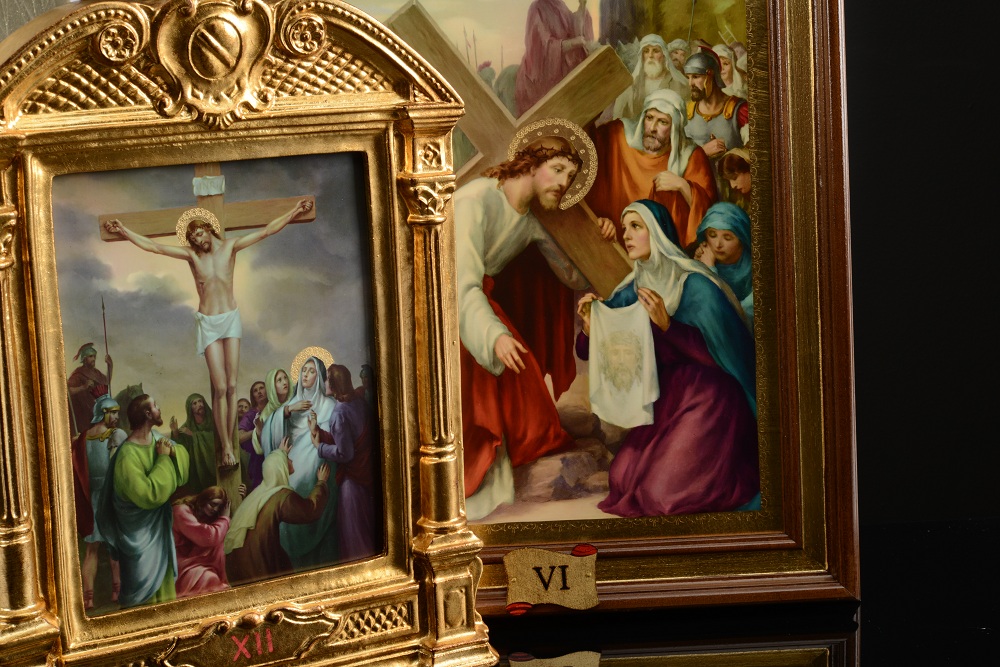
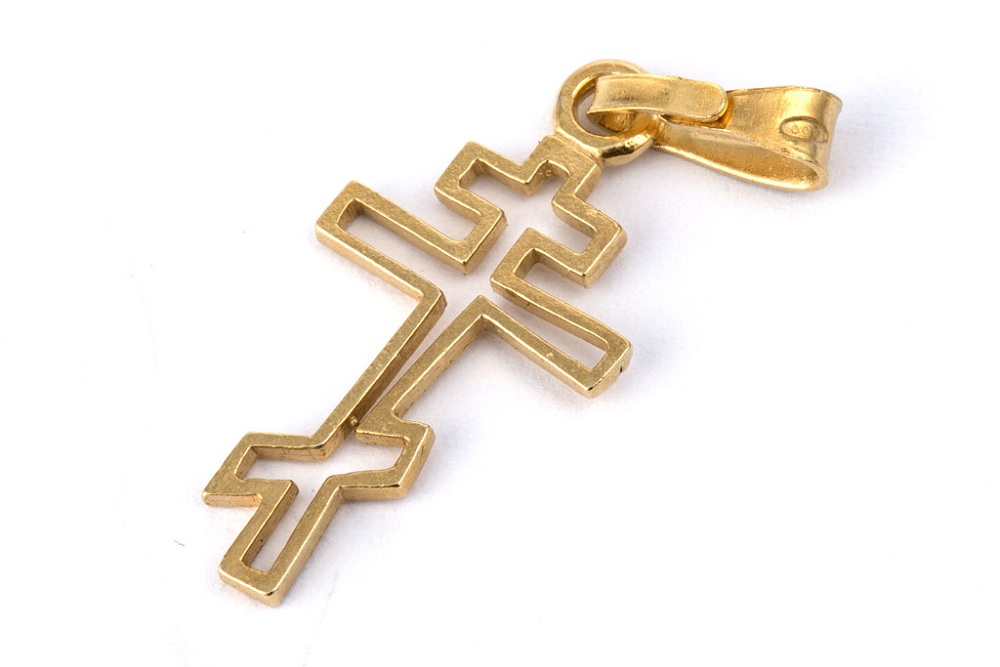
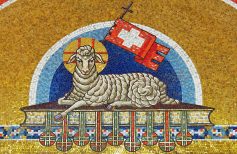
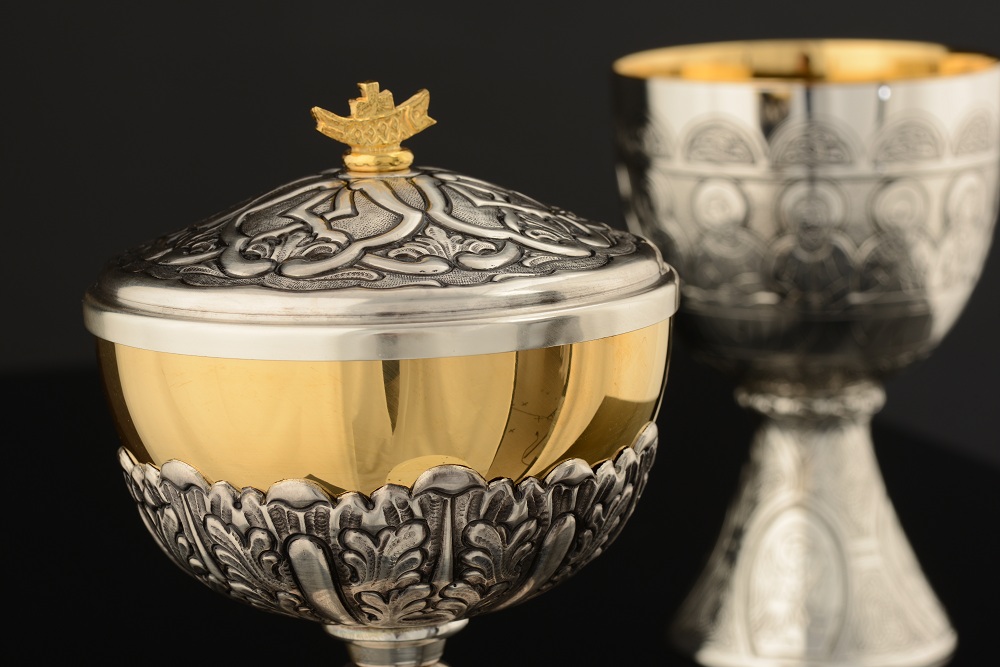
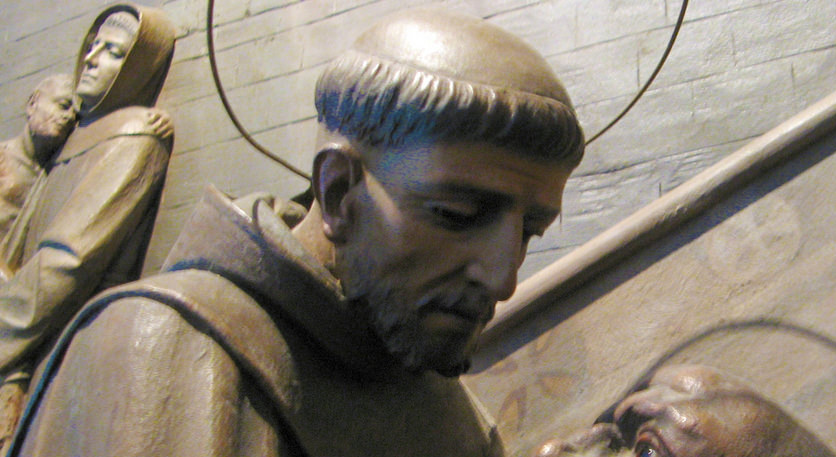






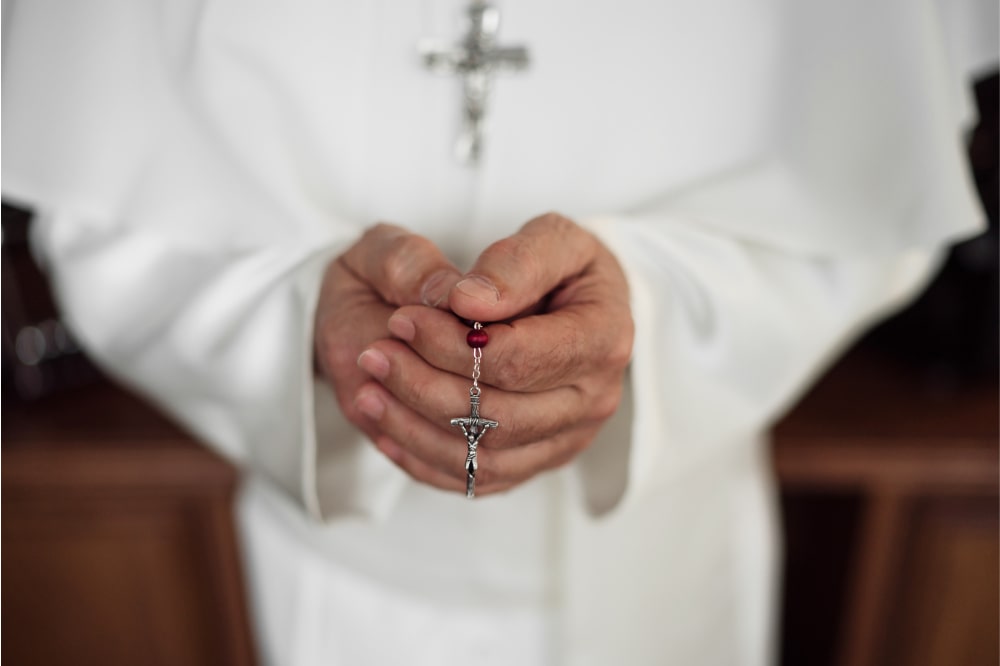
 5 June 2024
5 June 2024
